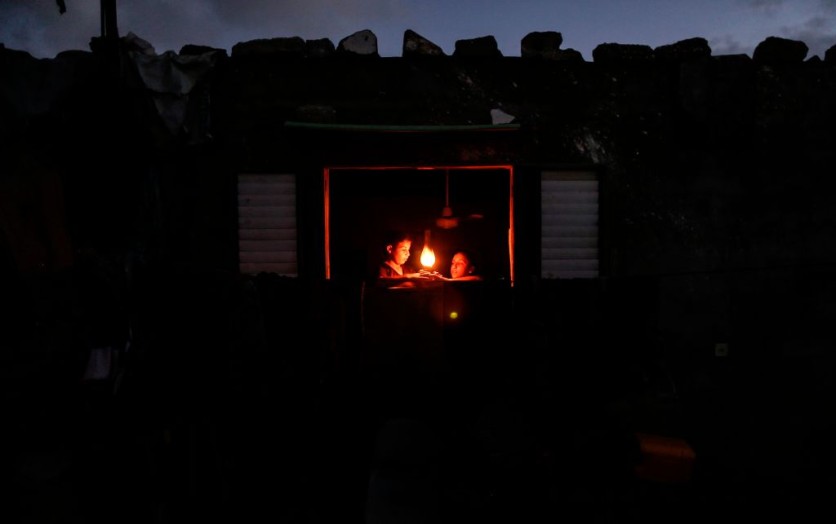In Gaza, a remarkable story unfolds as 15-year-old Palestinian teen Hussam Al-Attar showcases his ingenious solution to address electricity shortages. Despite facing severe power disruptions, Hussam rises to the challenge with a practical and inventive approach.

Palestinian children use a gas lamp during a power cut after Gaza's sole power plant shut down amid tension with Israel, in an impoverished household in Khan Yunis in the southern Gaza Strip, on August 18, 2020.
Known as the 'Newton of Gaza'
Armed with only basic tools, Interesting Engineering reported that Hussam ingeniously utilizes a dynamo and blades to harness wind power, providing much-needed electricity to illuminate and warm displacement shelters in Rafah.
He is affectionately known as the 'Newton of Gaza,' and a student at Jabel Mukaber School. His inspiration stems from a desire to bring comfort and relief to his twin nephews, who grapple with loneliness and fear in the darkness of their tent.
Hussam's initiative not only highlights his resourcefulness but also serves as a beacon of hope amidst adversity, demonstrating the power of ingenuity and determination to make a difference in challenging circumstances.
He shared that witnessing the fear in his twin nephews' eyes during the darkness inside the tent stirred deep emotions within him. He felt a strong urge to bring them happiness and brighten their surroundings.
Having experienced displacement firsthand, Hussam and his family embarked on a challenging journey from Beit Lahia, passing through Al-Nasr and Khan Yunis before finally finding refuge in Rafah, near the Egyptian border.
Creating the System
Despite the daunting obstacles they faced, Al Jazeera reported that Hussam's determination to contribute positively to his community remained unwavering.
Hussam ingeniously crafted fans capable of generating electricity using power generators. His first step involved scouring the makeshift environment of displacement shelters for accessible materials.
By salvaging components from discarded or damaged electronic devices, Hussam assembled the necessary elements for his improvised power generators. These components likely included coils, wires, and magnets, essential for harnessing electrical energy.
Subsequently, Hussam constructed a rudimentary yet functional turbine using locally available materials. Procuring a dynamo from the market for a mere 1 shekel, he initiated the generation of electricity by rotating this dynamo.
The turbine's blades, fashioned from lightweight but durable materials, were strategically positioned to capture the force of the wind. As the wind interacted with these makeshift blades, it propelled the turbine into motion.
Filled with pride, Hussam's mother emphasized his natural talent and knack for repurposing ordinary objects into practical tools. Families in need often sought his help in repairing their electrical equipment, as reported by Reuters.
Despite the challenges in Palestine, Hussam holds onto his dreams of becoming an inventor and explorer. He maintains an optimistic outlook on life's prospects, acknowledging the presence of numerous innovative teenagers like himself in Gaza.
As the 'Newton of Gaza,' Hussam Al-Attar isn't merely brightening shelters; he's guiding the path towards a more optimistic and hopeful future amidst adversity.





